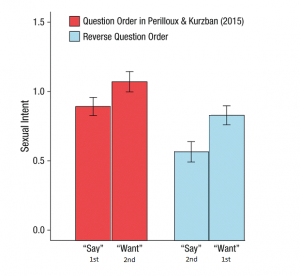There’s no getting around it: if you want to get better at something – anything – you need to practice. I’ve spent the last several years writing rather continuously and have noticed that my original posts are of a much lower quality when I look back at them. If you want to be the best version of yourself that you can be, you’ll need to spend a lot of time working at your skills of choice. Nevertheless, people do vary widely in terms of how much practice they are willing to devote to a skill and how readily they abandon their efforts in the face of challenges, or simply to time. Some musicians will wake up and practice several hours a day, some only a few days a week, some a few times throughout the year, and some will stop playing entirely (in spite of almost none of them making anything resembling money from it). In a word, some musicians possess more grit than others.
Those of us who spend too much time at a computer acquire a different kind of grit
To give you a sense for what is meant by grit, consider the following description offered by Duckworth et al (2007):
The gritty individual approaches achievement as a marathon; his or her advantage is stamina. Whereas disappointment or boredom signals to others that it is time to change trajectory and cut losses, the gritty individual stays the course.
Grit, in this context, refers to those who continue to pursue their goals when faced with obstacles, major or minor. According to Duckworth et al (2007), this trait of grit is referenced regularly by people discussing the top performers in their field about as often as talent, even if they might not refer to it by that name.
The aim of the Duckworth et al (2007) paper, broadly speaking, was two-fold: to create a scale to measure grit (as one did not currently exist), and then use that scale to see how well grit predicted subsequent achievements. Without going too in depth into the details of the project, the grit scale eventually landed on 12 questions. Six of those dealt with how consistent one’s interests are (like, “my interests change from year to year”) and the other six with perseverance of effort (like, “I have overcome setbacks to conquer an important challenge”). While this measure of grit was highly correlated with the personality trait of conscientiousness (r = .77), the two were apparently different enough to warrant separate categorization, as the grit score still predicted some outcomes after controlling for personality.
When the new scale was directed at student populations, grit was also found to relate to educational achievement, controlling for measures of general intelligence: in this case, college GPA controlling for SAT scores in a sample of about 1,400 Upenn undergraduates. The relationship between grit and GPA was modest (r = .25), though it got somewhat larger after controlling for SAT scores (r = .34). In a follow-up study, the grit scale was also used to predict which cadets at a military academy completed their summer training. Though about 94% of the cadets completed this training, these grittiest individuals were the least likely to drop out, as one might expect. However, unlike in the Upenn sample, grit was not a good predictor of subsequent cadet GPA in that sample (r = .06), raising some questions about the previous result (which I’ll get to in a minute).
This is time not spent studying for that engineering test
With that brief summary of grit in mind – hopefully enough to give you a general sense for the term – I wanted to discuss some of the theoretical aspects of the idea. Specifically, I want to consider when grit might be a good thing and when it might be better to persevere a little less or find new interests.
One big complication stopping people from being gritty is the simple matter of opportunity costs. For every task I decide to invest years of dedicated, consistent practice to, there are other tasks I do not get to accomplish. Time spent writing this post is time I don’t get to spend pursuing other hobbies (which I have been taking intermediate breaks to pursue, for the record). This is, in fact, why I have begun writing a post every two weeks or so down from each week: there are simply other things in life I want to spend my time on. Being gritty about writing means I don’t get to be equally gritty about other things. In fact, if I were particularly gritty about writing I might not get to be gritty about anything at all. Not unless I wanted to stop being gritty about sleep, but even then I could just devote that sleeping time to writing as well.
This is a problem when it comes to grit being useful, because of a second issue: diminishing returns on practice. That first week, month, or year you spend learning a skill typically yields a more appreciable return than the second, third, or so on. Putting that into a quick example, if I started studying chess (a game I almost never play), I would see substantial improvements to my win rate in the first month. Let’s just say 10% to put a number on it. The next month of practice still increases my win rate, but not by quite as much, as there are less obvious mistakes I’m making. I go up another 5%. As this process continues, I might eventually spend a month of practice to increase my win rate by mere fractions of a percent. While this dedicated practice does, on paper, make me better, the size of those rewards relative to the time investment I need to make to get them gets progressively smaller. At a certain point, it doesn’t make much more sense to commit that time to chess when I could be learning to speak Spanish or even just spend that time with friends.
This brings us nicely to the next point: the rate of improvement, both in terms of how quickly you learn and how far additional practice can push you, ought to depend on one’s biological potential (for lack of a better term). No matter how much time I spend practicing guitar, for instance, there are certain ceilings on performance I will not be able to break: perhaps it becomes physically impossible to play any faster while maintaining accuracy; perhaps some memory constraints come into play and I cannot remember everything I’ve tried to learn. We should expect grit to interact with potential in a certain way: if you don’t have the ability to achieve a particular task, being gritty about pursuing it is going to be time spent effectively banging your head against a brick wall. By contrast, the individual who possesses a greater potential for the task in question has a much higher chance of grit paying off. They can simply get more from practice.
Some people just have nicer ceilings than others
This is, of course, assuming the task is actually one that can be accomplished. If you’re very gritty about finding the treasure buried in your backyard that doesn’t actually exist, you’ll spend a lot of time digging and none getting rich. Being gritty about achieving the impossible is a bad idea. But who’s to say what’s impossible? We usually don’t have access to enough information to say something cannot (or at least will not) be achieved, but we can often make some fairly-educated guesses. Let’s just stick to the music example for now: say you want to accomplish the task of becoming a world-famous rockstar. You have the potential to perform and you’re very gritty about pursuing it. You spend years practicing, forming bands, writing songs, finding gigs, and so on. One problem you’re liable to encounter in this case is simply that many other people who are similarly qualified are doing likewise, and there’s only so much room at the top. Even if you are all approximately as talented and gritty, there are some ceiling effects at play where being even grittier and more talented does not, by any means, guarantee more success. As I have mentioned before, the popularity of cultural products can be a fickle thing. It’s not just about the products you produce or what you can do.
We see this playing out in the world of academia today. As many have lamented, there seem to be too few academic jobs for all the PhDs getting minted across the country. Being gritty about pursuing that degree – all the time, energy, and money spent earning it – turned out to not be a great idea for many who have done so. Sure, you can bet that just about everyone who achieved their dream job as a professor making a decent salary was pretty gritty about things. You have to be if you’re going to spend 10 or more years invested in higher education with little payoff and many challenges along the way. It’s just that lots of people who were about as gritty as those who got a job failed to do anything with their degree after they achieved it. As this example shows, not only does the task need to be achievable, but the rewards for achieving it need to be both valuable and likely if grit is to pay off. If the rewards aren’t valuable (eg, a job as an adjunct teaching 5 courses a semester for about as much as you’d make working minimum wage, all things considered), then pursuing them is a bad idea. If the rewards are valuable but unlikely (eg, becoming a top-selling pop artist), then pursuing them is similarly a bad idea for just about everyone. There are better things to do with your time.
The closest most people will come to being a rockstar
This yields the following summary: for grit to be potentially useful, a task needs to be capable of being accomplished, you need the potential to accomplish it given enough time, the rewards of achieving it need to be large enough, relative to the investment you put in, and the probability of achieving those rewards is comparably high. While that does leave many tasks for which passionate persistence and practice might pay off (and many for which it will not), this utility always exists in the context of other people doing likewise. For that reason, beyond a certain ceiling of effort more is not necessarily much of a guarantee of success. You can think of grit as – in many cases – something of a prerequisite for success rather than a great determinant. Finally, all of that needs to be weighed against the other things you could be doing with your time. Time spent being gritty about sports is time not spent being gritty about academics, which is time not spent being gritty about music, and so on.
If you want to reach your potential within a domain, there’s really no other option. You’ll need to invest lots of time and effort. Figuring out where that effort should go is the tricky part.
References: Duckworth, A., Peterson, C, Matthews, M., & Kelly, D. (2007). Grit: Perseverance and passion for long-term goals. Journal of Personality & Social Psychology, 92, 1087-1101.


































